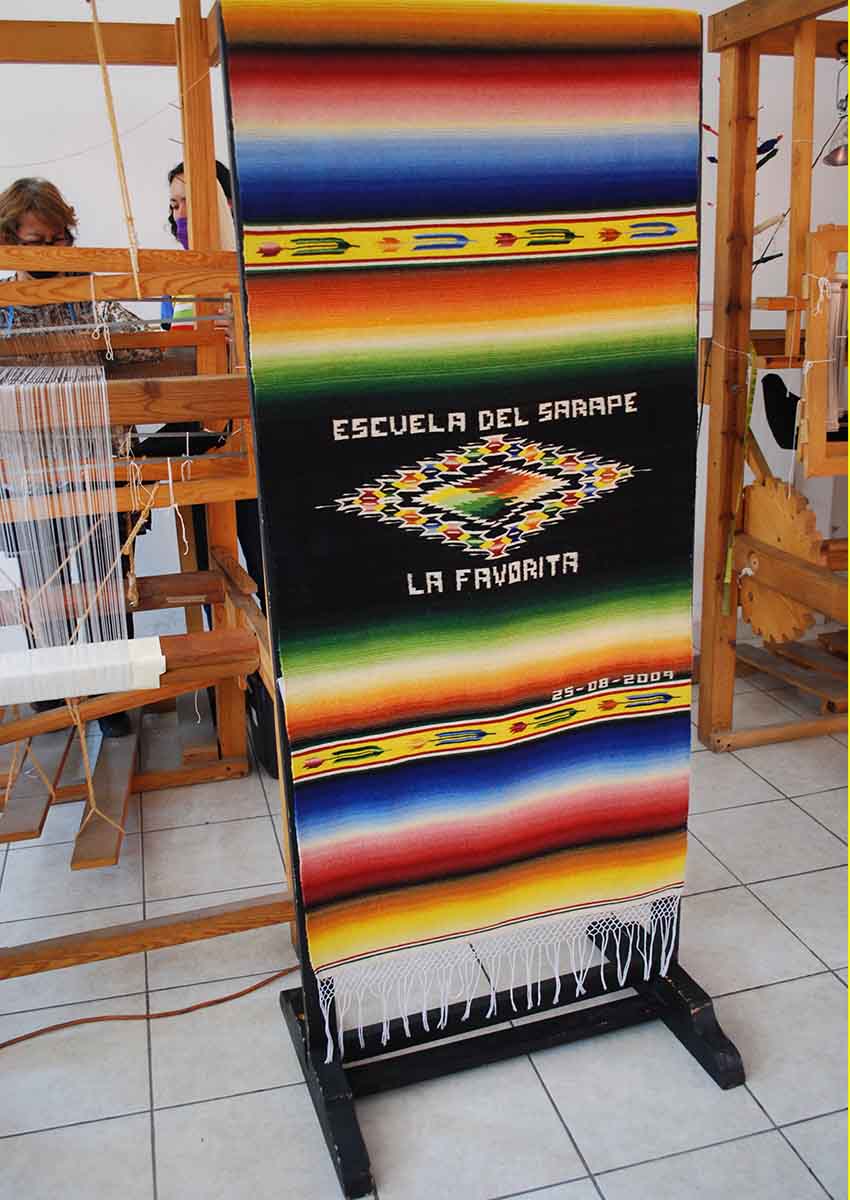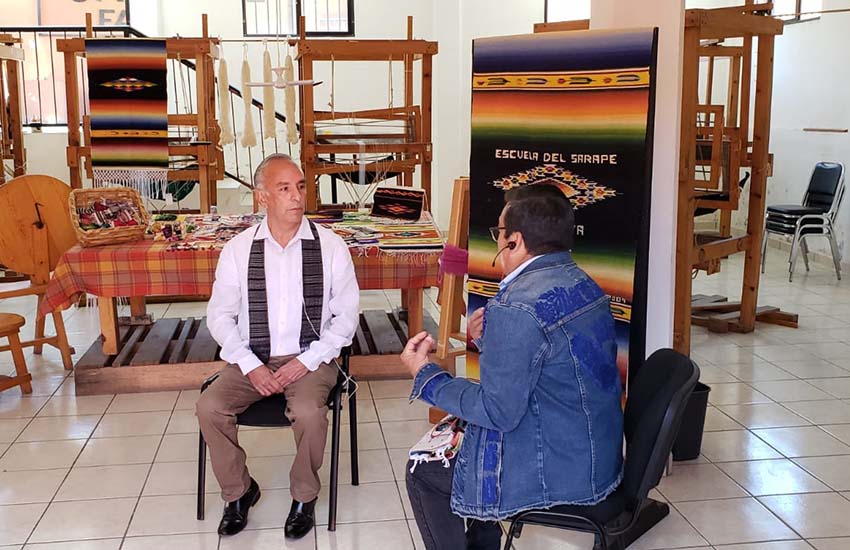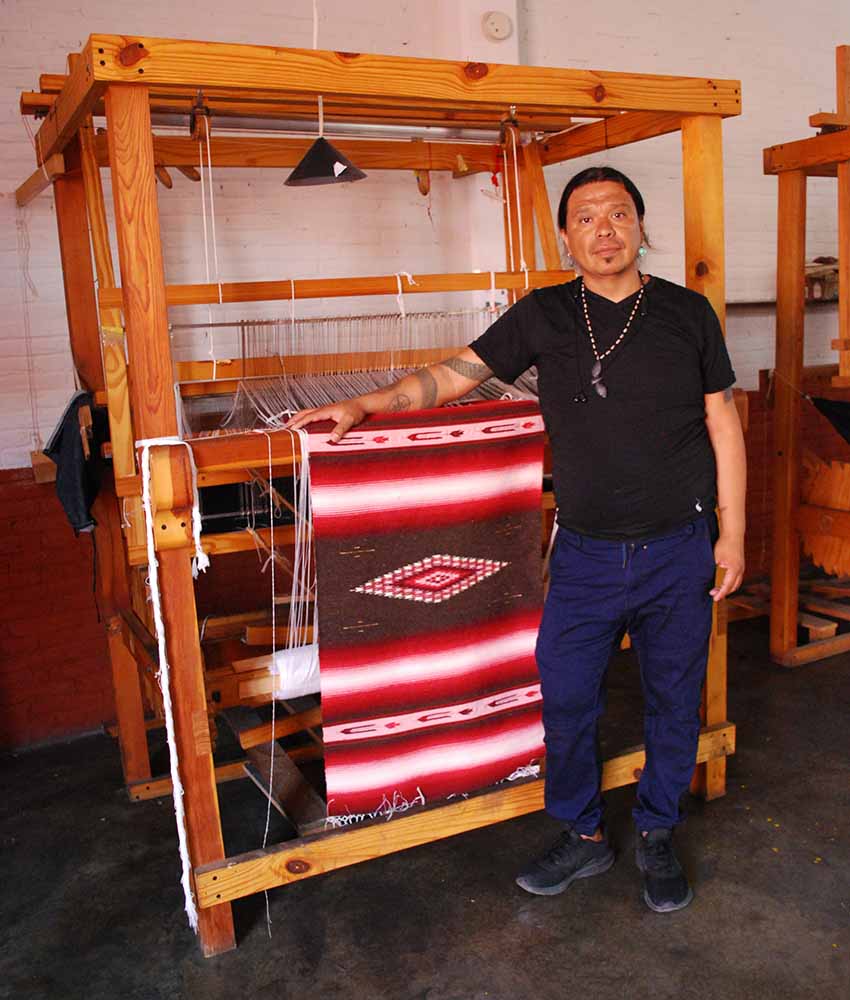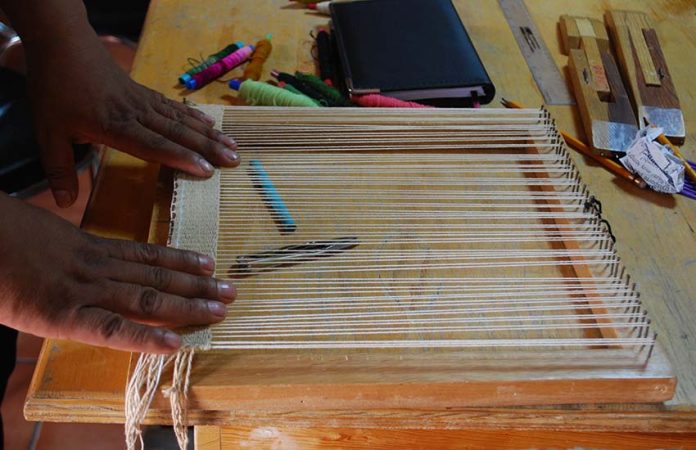One of Mexico’s most iconic garments is in a race against time to avoid extinction: the traditional sarape.
If you’ve ever watched a film in the Western genre or anything historic related to the north of Mexico, you have likely seen these bright, multicolored textile coverings that kept generations of herders and others warm.
Unfortunately, if you have even been in any tourist market, you have seen cheap knock-offs that trivialize the sarape’s cultural and historical importance.
The sarape is the result of a northward push by the Spanish and their indigenous allies after the fall of the Mexica city of Tenochtitlán. Areas like Coahuila were significantly drier than what they were used to in their central Mexican homelands, but Tlaxcaltecos and other Mesoamerican groups nonetheless transplanted much of their way of life here.

The Saltillo sarape of today is likely a modification of a garment called a tilma, a rectangular fabric that was used to wrap around the body and even to carry things. Sarapes are found in both Coahuila and Tlaxcala, and both claim denomination of origin rights over it.
Sarapes in Saltillo and in Tlaxcala are similar, but the sarape is more strongly associated with the city of Saltillo. Real sarapes are handwoven on pedal looms with cotton and wool and have brightly colored stripes and large geometric patterns.
Such work, however, has nearly died out.
According to renowned folk art expert Marta Turok, by the 1990s, only one traditional workshop existed in Saltillo proper. So in the 2000s, the state decided to step in, first founding a museum and then a formal program for the training and certification of sarape weavers.
The result is La Favorita Sarape School, located in Saltillo’s historic center. It is Mexico’s only fully-accredited technical school dedicated to a traditional handcraft.
The school has attracted students from all walks of life, who get involved for both economic and cultural reasons. Students who complete the two-year program get state-recognized diplomas, and those who create fine sarapes can have them certified by state cultural authorities.
The school’s organization may be modern, but the skills it teaches are traditional. The goal is to create new generations of weavers who value the art.
The 50 pedal looms used by students, as well as by graduates working on special projects, are heart of the school. They are faithful recreations of the looms brought by the Spanish to Mexico.

But students don’t get to work with the giant looms right away. They first must learn how to card, spin and dye wool. Then they make their first swatches using small frames, weaving with their fingers to get a feel for wool weft, cotton warp and how colors mingle.
When they do graduate to looms, they first make rugs and wall hangings because sarapes use much finer threads, which allows the finished piece to wrap around the body but are also more exacting and time-consuming to work with. In particular, the creation of intricate geometric patterns requires good eyes and knowing exactly when to change thread colors.
The lead weaver at the school is Rubén Tamayo, who began his career as an apprentice to one of the old weavers. He came to teaching at La Favorita through weaving research projects with state cultural authorities. It has been a perfect fit.
“When you are an artisan, it is a great responsibility because you are conserving a part of the culture,” says the maestro. “It is important to do excellent work because the sarapes represent the city and state.”
But the school’s work doesn’t end there. The institution has also been a strong advocate for a return to natural dyeing, something that had completely died out in the state. This effort is spearheaded by graduate María López Gutiérrez.
One peculiarity of Saltillo sarapes is that the stripes are of graduated colors, making the dyeing of the wool more challenging. The colors were originally obtained using natural materials from Mesoamerica such as the cochineal insect and indigo.
As part of the initiative, the school invited experts such as anthropologist and folk art expert Marta Turok along with weavers from Oaxaca to give workshops, but much of the work of bringing these methods back to sarapes was done by López.
The school has received recognition at the national level, but maintaining the program and supporting its graduates is not easy. The first problem is that authentic handwoven wool sarapes carry a hefty price tag due to the time and talent needed to make them. Such garments are generally made for experienced collectors who know their worth.

But to make weaving more economically viable, teachers and students have developed new products — bracelets and other jewelry, decorative objects and ore — and collaborations.
The school has also created modern clothing with sarape-inspired decoration, and with European artists to create fine tapestries. They’ve also partnered with the state’s budding smithing artisans to put mini-sarapes into silver frames for necklaces.
Despite all this, filling the loom stations has not been easy. The school’s first generation of graduates numbered nearly 30, but it has dropped off since then, with only about 50 or so completing the four-semester course to date. But the school is the craft’s only real hope because, as Tamayo says, there is no one left willing to go through the rugged apprenticeship process that he did as a very young man.
Turok agrees, noting that the traditional handcrafts of the north do not receive the same respect as those from the center and south of the country.
But, the school and the Coahuila government will continue, says director Francisco Javier Reyes, because “… the Saltillo sarape is a national emblem, and part of Mexican identity.”
Leigh Thelmadatter arrived in Mexico 18 years ago and fell in love with the land and the culture in particular its handcrafts and art. She is the author of Mexican Cartonería: Paper, Paste and Fiesta (Schiffer 2019). Her culture column appears regularly on Mexico News Daily.
